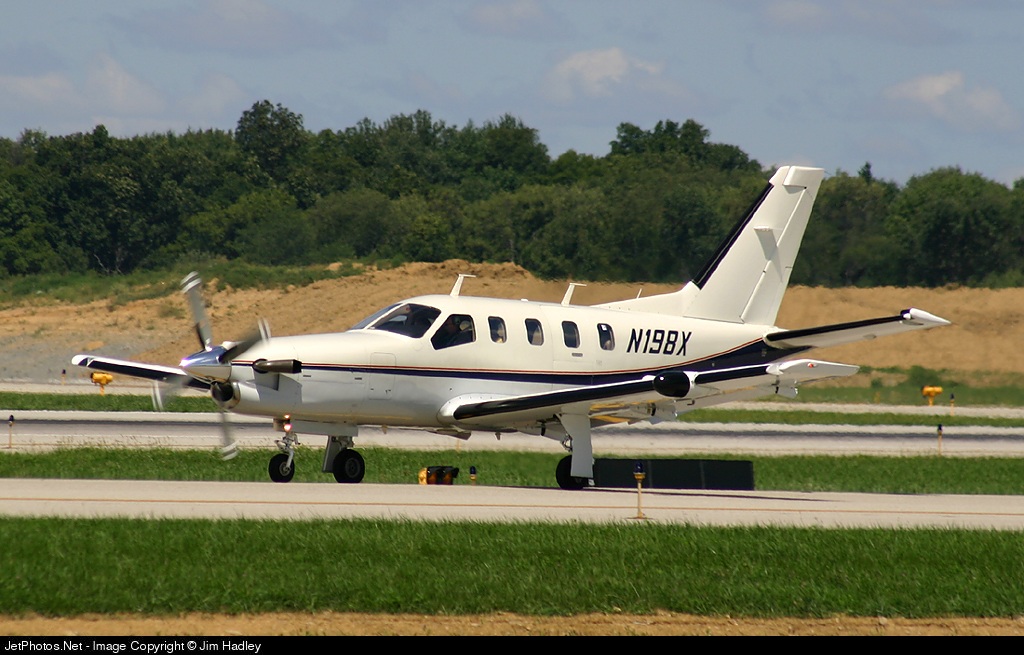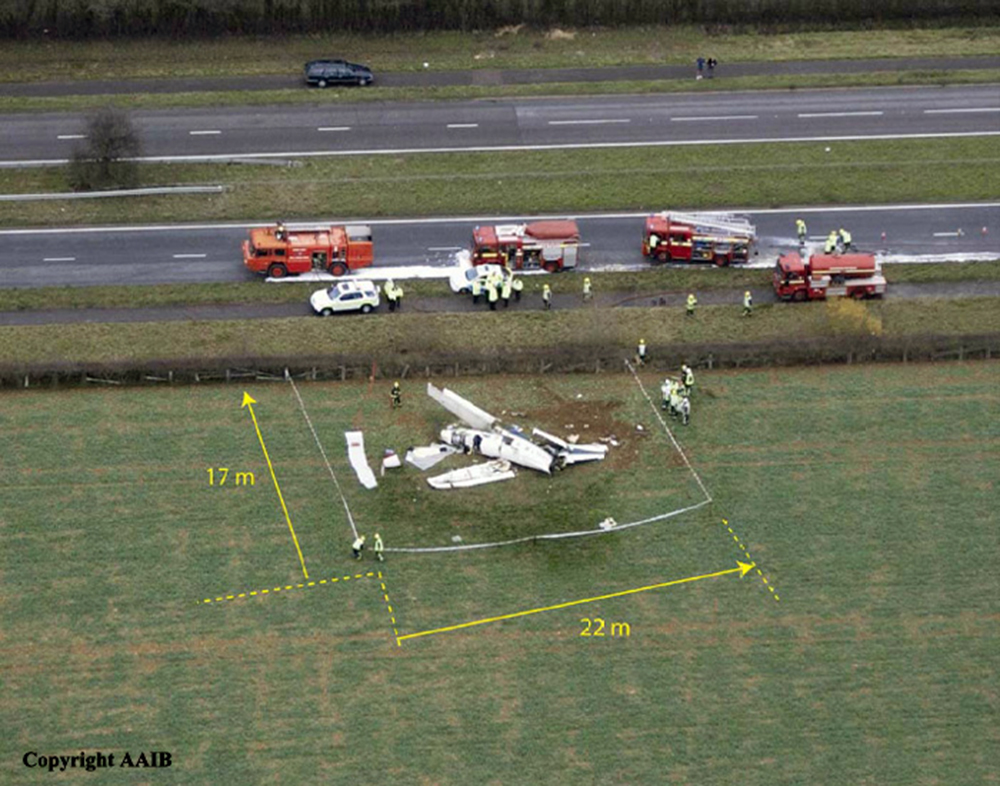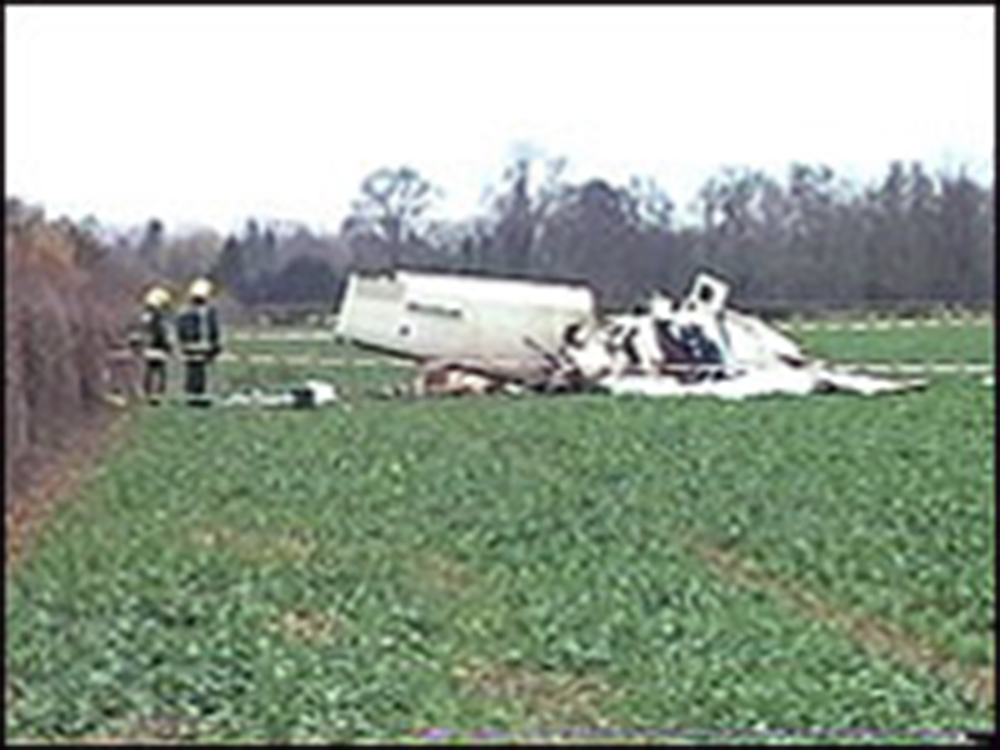Country
Crash of a Socata TBM-700 in Lancaster
Date & Time:
Dec 27, 2005 at 1446 LT
Registration:
N198X
Survivors:
Yes
Schedule:
Camarillo - Lancaster
MSN:
138
YOM:
1998
Crew on board:
2
Crew fatalities:
Pax on board:
0
Pax fatalities:
Other fatalities:
Total fatalities:
0
Captain / Total hours on type:
2921.00
Copilot / Total hours on type:
15
Aircraft flight hours:
1603
Circumstances:
The airplane stalled on short final approach, and it impacted the ground. The purpose of the flight was for the student to receive dual flight instruction to become more acquainted with the airplane's handling characteristics. The student met with his certified flight instructor and received a briefing regarding the upcoming lesson involving, in part, takeoff and landing practice. The instructor directed his student to perform a simulated engine out approach, and engine power was reduced as the airplane glided toward the airport. The student entered a close in downwind approach and, at the direction of the instructor, then performed a left circling turn onto the base and final approach legs. The landing gear was lowered, and the student questioned the instructor regarding whether they could glide all the way to the runway. The instructor advised his student to maintain 90 knots airspeed. During the descent, as the airplane turned from the close in base leg onto the final approach leg, the instructor told his student "don't bank." The student rolled the wings level. Immediately thereafter, the left bank began a second time and the instructor again said, "Don't bank." The student replied, "I'm not." The instructor applied engine power and right rudder to reduce the left bank. The airplane stopped rolling left, and then rolled into a right bank, whereupon the right wing impacted the ground. At no time did the instructor direct his student to release the airplane's flight controls.
Probable cause:
The student's failure to maintain adequate airspeed, and the instructor's inadequate supervision and delayed remedial action, which resulted in a stall/mush.
Final Report:

Crash of a Socata TBM-700 in Oxford: 3 killed
Date & Time:
Dec 6, 2003 at 1124 LT
Registration:
N30LT
Survivors:
No
Schedule:
Brussels - Oxford
MSN:
201
YOM:
2001
Crew on board:
1
Crew fatalities:
Pax on board:
2
Pax fatalities:
Other fatalities:
Total fatalities:
3
Captain / Total hours on type:
500.00
Circumstances:
Towards the end of a flight from Brussels to Oxford (Kidlington), the pilot was cleared to land from a visual straight-in approach to Runway 01. The surface wind was reported as 030°/15 kt. As the aircraft crossed the airfield boundary, it started to roll to the left. Shortly after, it struck the ground to the west of the runway threshold. Despite an extensive investigation, no technical malfunction was identified which could have caused the apparent uncontrolled roll to the left. Although there was no other conclusive evidence which would explain the manoeuvre, it is possible that control of the aircraft was lost during application of power to adjust the flight path or in an attempted late go-around, or as a result of an unknown distraction. The passengers was the French businessman Paul-Louis Halley, CEO of Carrefour, accompanied by his wife. They were en route to England to take part to a wedding.
Probable cause:
Despite an extensive investigation, no definite conclusion could be reached as to why N30LT crashed on a visual approach to Oxford (Kidlington) Airport. No technical evidence was found which would explain the uncontrolled roll but there were certain operational possibilities. Without hard evidence, however, none could be fully supported, but loss of control resulting from an unknown distraction, or during the application of power for flight path adjustment or an attempted late go-around, must be considered as possibilities. The lack of a crash protected data, voice or image recording system on N30LT made it impossible to successfully determine a specific cause or causes of this accident.
Final Report:



Crash of a Socata TBM-700 in Dundee
Date & Time:
Oct 24, 2003 at 1742 LT
Registration:
N700VA
Survivors:
Yes
Schedule:
Edinburgh – Dundee
MSN:
233
YOM:
2002
Crew on board:
1
Crew fatalities:
Pax on board:
3
Pax fatalities:
Other fatalities:
Total fatalities:
0
Captain / Total hours on type:
65.00
Circumstances:
After an uneventful flight from Edinburgh the pilot made a visual approach to Runway 28 (landing distance available 1,400 metres) at Dundee. The pilot reported that the aircraft floated down the runway in the flare and bounced lightly on touchdown. During the bounce the aircraft initially yawed left and then rolled left in a normal pitch attitude with no stall warning. Full right rudder was applied but this was unable to correct the yaw. Power was applied to initiate a go-around, whilst maintaining full right rudder, but the pilot was unable to prevent the left wing from hitting the ground. This caused the aircraft to yaw rapidly to the left bringing one of its wheels into contact with a low wall. The pilot then reduced power and ditched in the River Tay, approximately 10 metres from the shore. The air traffic controllers on duty reported that the aircraft achieved a high nose attitude during the go-around before the left wing dropped and the aircraft veered to the left. The aircraft came to rest with the top of the fuselage out of the water and the pilot and passengers were able to evacuate though the main door and stand on the wing to await rescue by the airport's hovercraft. The hovercraft could only carry two passengers at a time thus the process was delayed resulting in the pilot and passengers suffering from mild hypothermia.
Final Report:


Crash of a Socata TBM-700 in Mobile: 1 killed
Date & Time:
Apr 24, 2003 at 2012 LT
Registration:
N705QD
Survivors:
No
Schedule:
Lawrenceville – Mobile
MSN:
231
YOM:
2002
Flight number:
LBQ850
Crew on board:
1
Crew fatalities:
Pax on board:
0
Pax fatalities:
Other fatalities:
Total fatalities:
1
Captain / Total hours on type:
408.00
Aircraft flight hours:
1222
Circumstances:
A review of communications between Mobile Downtown Control Tower, and the pilot revealed that while on approach the pilot reported having a problem. The Ground Controller reported that he had the airplane in sight and cleared the flight to land on runway 18. The pilot stated that he had a "run away engine", and elected to shut down the engine and continued the approach. The Controller then cleared the pilot again to runway 18. The pilot then stated that he did not think that he was going to "make it." The airplane collided with a utility pole and the ground and burst into flames short of the runway. The post-accident examination of the engine found that the fuel control unit arm to the fuel control unit interconnect rod end connection was separated from the rod end swivel ball assembly. The swivel ball assembly was found improperly attached to the inboard side of the arm, with the bolt head facing inboard, instead of outboard, and the washer and nut attached to the arm's outboard side instead of the inboard side. The rod separation would resulted in a loss of power lever control. The published emergency procedures for "Power Lever Control Lose," states; If minimum power obtained is excessive: 1) reduce airspeed by setting airplane in nose-up attitude at IAS < 178 KIAS. 2) "inert Sep" switch--On. 3) if ITT >800 C "Inert Sep"--Off. 4) Landing Gear Control--Down. 5) Flaps--Takeoff. 6) Establish a long final or an ILS approach respecting IAS < 178 KIAS. 7) When runway is assured: Condition Lever to --Cut Off. 8) Propeller Governor Lever to-- Feather. 9) Flaps --Landing as required (at IAS <122 KIAS). 10) Land Normally without reverse. 11) Braking as required. The pilot stated to Mobile Downtown Control Tower, Ground Control that he had a "run away engine" and that he "had to shut down the engine". As a result of the pilot not following the published emergency procedures, the airplane was unable to reach the runway during the emergency.
Probable cause:
The improper installation of the power control linkage on the engine fuel control unit by maintenance personnel which resulted in a loss of power lever control, and the pilot's failure to follow emergency procedures and his intentional engine shutdown which resulted in a forced landing and subsequent inflight collision with a light pole.
Final Report:
Crash of a Socata TBM-700 in Leesburg: 3 killed
Date & Time:
Mar 1, 2003 at 1445 LT
Registration:
N700PP
Survivors:
No
Schedule:
Greenville - Leesburg
MSN:
059
YOM:
1992
Crew on board:
2
Crew fatalities:
Pax on board:
1
Pax fatalities:
Other fatalities:
Total fatalities:
3
Aircraft flight hours:
1049
Circumstances:
The private pilot, who sat in the left seat, was executing the LOC RWY 17 instrument approach in actual instrument meteorological conditions, when the airplane decelerated, lost altitude, and began a left turn about 2 miles from the airport. Subsequently, the airplane collided with terrain and came to rest on residential property. The radar data also indicated that the airplane was never stabilized on the approach. A witness, a private pilot, said the airplane "appeared" out of the fog about 300-400 feet above the ground. It was in a left bank, with the nose pointed down, and was traveling fast. The airplane then "simultaneously and suddenly level[ed] out," pitched up, and the engine power increased. The witness thought that the pilot realized he was low and was trying to "get out of there." The airplane descended in a nose-high attitude, about 65 degrees, toward the trees. Radar data indicates that the airplane slowed to 80 knots about 3 miles from the airplane, and then to 68 knots 18 seconds later as the airplane began to turn to the left. Examination of the airplane and engine revealed no mechanical deficiencies. Weather reported at the airport 25 minutes before the accident included wind from 140 degrees at 5 knots, visibility 1 statute mile, and ceiling 500 foot overcast. Weather 5 minutes before the accident included wind from 140 degrees at 5 knots, visibility 1 statute miles, and ceiling 300 foot overcast.
Probable cause:
The pilot's failure to fly a stabilized, published instrument approach procedure, and his failure to maintain adequate airspeed which led to an aerodynamic stall.
Final Report:


